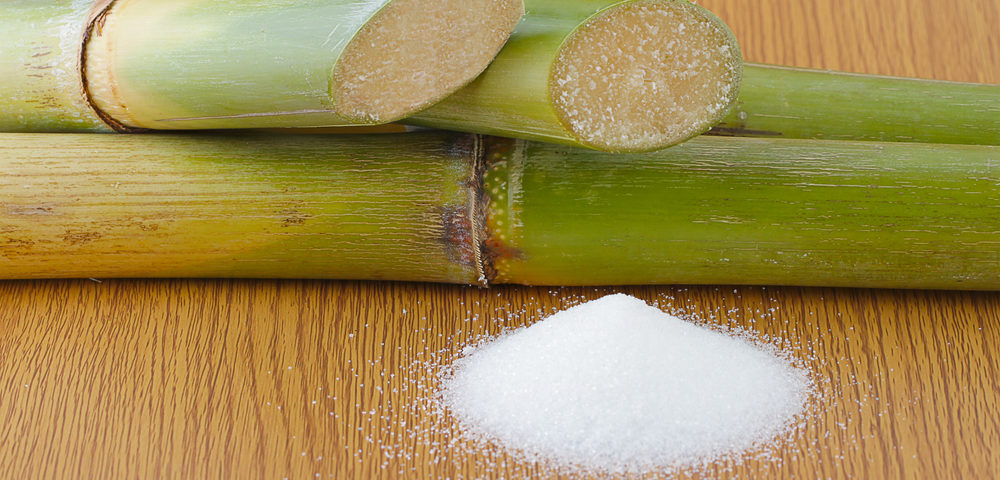Exactly How Walking Stick Sugar Handling Chemicals Improve Sugar Top Quality and Return
The duty of handling chemicals in walking cane sugar production is pivotal, as they straight affect both the quality and yield of the end product. By employing compounds such as lime and phosphoric acid, suppliers can effectively get rid of pollutants and boost removal performance. The incorporation of triggered carbon and enzymes offers to optimize the failure of intricate sugars, inevitably leading to a purer and higher-quality sugar. Nevertheless, the complexities of how these chemicals interact within the processing atmosphere raising questions about their long-term effects and prospective developments in the industry.
Introduction of Walking Stick Sugar Processing
Walking cane sugar processing involves a series of essential steps that transform raw sugarcane right into polished sugar products. The process begins with harvesting, where mature sugarcane stalks are reduced and moved to refining facilities. Upon arrival, the cane undergoes washing to remove impurities such as dirt and plant products.
Following cleaning, the cane is squashed to remove the juice, which contains sucrose - sugar and cane. This juice goes through explanation, where lime and warm are used to eliminate continuing to be impurities and non-sugar elements. The made clear juice is then evaporated to concentrate the sugar web content, leading to the development of thick syrup
Following, the syrup is taken shape via a regulated air conditioning procedure, resulting in sugar crystals. To attain refined sugar, more filtration actions are applied, including washing, re-crystallization, and drying.
The last item is either packaged as raw sugar or even more refined into white sugar, dealing with various customer and industrial requirements. This thorough series of steps ensures the manufacturing of high-grade sugar, necessary for various applications in food and drink sectors.
Trick Processing Chemicals Utilized
The production of polished walking cane sugar counts on different handling chemicals that play considerable roles at different stages. This step is crucial for enhancing the general top quality of the removed juice.
Phosphoric acid serves a double function; it improves the information process and assists in the elimination of color-forming compounds, adding to a higher purity of the end product. Furthermore, sulfur dioxide works as a lightening representative, permitting the reliable elimination of undesirable pigments and improving the color of the sugar.
Other notable chemicals consist of activated carbon, which is employed for additional decolorization, and enzymes that facilitate the malfunction of intricate sugars right into simpler forms, hence enhancing return. The cautious choice and application of these handling chemicals are crucial for maximizing the efficiency of sugar extraction and refining processes, ultimately leading to a more consistent and greater top quality sugar product.

Influence on Sugar Quality
How do handling chemicals affect the quality of polished sugar? The intro of different chemicals in the walking stick sugar handling phase significantly boosts the pureness and general high quality of the end product. Trick agents, such as phosphoric acid and calcium hydroxide, facilitate the information process, effectively getting rid of impurities and colorants that can adversely impact sugar's appearance and taste. By counteracting undesirable components, these chemicals aid achieve a higher level of decolorization, resulting in a more visually enticing and marketable item.
Furthermore, making use of activated carbon and ion-exchange materials during the refining procedure plays a critical role in getting rid of off-flavors and unfavorable odors, adding to the sugar's sensory profile. This refinement not just elevates the organoleptic and visual high qualities but likewise boosts the shelf life by lessening microbial activity related to pollutants.
On top of that, the specific application of these chemicals ensures that the sugar shows a regular grain dimension and flowability, which are vital characteristics for both commercial applications and consumer choices. On the whole, the strategic use of processing chemicals is fundamental in achieving top quality refined sugar that meets sector criteria and customer assumptions.

Enhancing Return Effectiveness
Enhancing yield efficiency in walking go right here cane sugar processing involves optimizing various phases of manufacturing to maximize the quantity of sugar extracted from raw cane. One important facet is the choice and application of ideal handling chemicals, which can facilitate the break down of cell wall surfaces and enhance sugar release throughout removal. Chemicals such as acids and enzymes play a vital role in this procedure by hydrolyzing polysaccharides news and liquifying pollutants, thereby enhancing the general extraction efficiency.

Routine surveillance and change of processing parameters are necessary to keep effectiveness throughout production (sugar and cane). By using these methods, sugar manufacturers can not just boost the quantity of sugar obtained yet also decrease waste and reduced production expenses, adding to a much more lasting and successful sugar handling procedure
Benefits for Producers and Consumers
Cane sugar handling chemicals use significant benefits for both consumers and producers, producing a much more effective and lasting market. For producers, these chemicals enhance removal processes, leading to greater returns and improved sugar quality.
The better high quality of sugar translates to better taste and consistency in food products. In addition, the usage of processing chemicals can lead to a more stable supply of sugar, reducing shortages and rate spikes that can take place due to ecological elements or market changes.
Verdict

The function of processing chemicals in walking cane sugar manufacturing is critical, as they straight influence both the quality and yield of the last item (sugar and cane). The consolidation of triggered carbon and enzymes offers to optimize the breakdown of complex sugars, inevitably leading to a purer and higher-quality sugar.Walking cane sugar processing entails a series of crucial actions that change raw sugarcane into refined sugar products.Enhancing return effectiveness in walking stick sugar processing includes maximizing various phases of manufacturing to maximize the quantity of sugar drawn out index from raw walking cane.Cane sugar handling chemicals play a crucial role in boosting both sugar top quality and return
Comments on “From Field to Table: The Journey of Sugar and Cane”